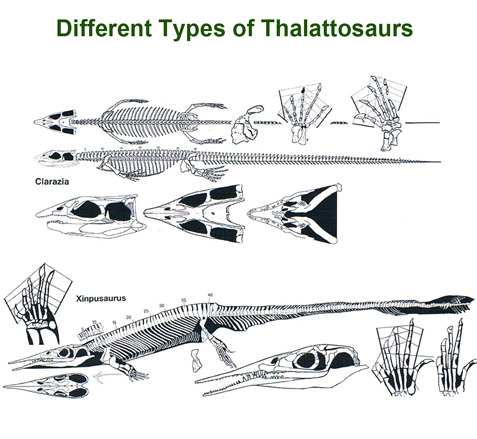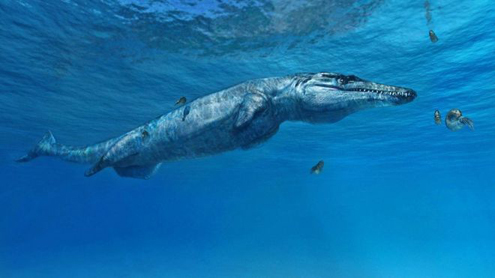Let’s Ear It for Thalattosuchians (Evolution of Cetaceans)
Prehistoric Crocodiles and Whales – Convergent Evolution
The evolution of the cetaceans from terrestrial ancestors to the fully adapted pelagic forms we see today has been well documented. However, a group of archosaurs, specifically a clade of crocodyliformes – the thalattosuchians, underwent the transition from terrestrial animals to become fast swimming predators over a hundred million years earlier.
Two very different types of tetrapod became adapted to marine environments by developing flippers from limbs, streamlining their bodies and evolving tail flukes to aid propulsion in water. New research from a team of scientists led by Julia Schwab of the University of Edinburgh, also reveals that part of the inner ear changed to and that both thalattosuchians and the later synapsids that became modern whales ended up with very similar inner ear anatomy – an example of convergent evolution.
Thalattosaurs Evolved into Fully Pelagic Marine Reptiles from Terrestrial Ancestors

Picture credit: David Peters
Computerised Tomography of Thalattosaur Skulls
Writing in the academic journal PNAS (Proceedings of the National Academy of Sciences of the United States of America), the researchers report on the use of CAT scans to examine the fossil skulls of a dozen different types of marine crocodile to examine the vestibular system of the inner ear. This system consists of three looping semi-circular canals and helps with spatial awareness and balance. As thalattosuchians evolved into fully marine forms, during a long semi-aquatic phase, the morphology of their ear canals changed. The ear canals became smaller and fatter – a shape that made their sensory system less sensitive, an ear canal morphology shared with today’s extant cetaceans.
A Seven-metre-long Late Jurassic Marine Predator (Plesiosuchus manselii)
Picture credit: Fabio Manucci/University of Edinburgh
Adapting to a Marine Existence
The inner ear canal shape that is common to both thalattosaurs and cetaceans is an adaptation to a marine existence, whereby the buoyancy of the water supports the animal in what tends to be a more uniform medium such as the the Epipelagic and the Mesopelagic zones of the ocean. This contrasts to the environment encountered by a terrestrial animal which has to cope with the full effect of gravity on its body and a more complex landscape.
The researchers conclude that the adaptations to the thalattosaurs sensory capabilities evolved in response to their marine existence, rather than driving them into it.
Commenting on the significance of this study, co-author Steve Brusatte (University of Edinburgh), stated:
“The ancient aquatic crocs developed unusual inner ears after modifying their skeletons to become better swimmers. Whales also changed their ears in a similar way, but did it soon after entering the water. It seems like the crocs and whales took similar, but different, evolutionary routes from land to water.”
The scientific paper: “Inner ear sensory system changes as extinct crocodylomorphs transitioned from land to water” by Julia A. Schwab, Mark T. Young, James M. Neenan, Stig A. Walsh, Lawrence M. Witmer, Yanina Herrera, Ronan Allain, Christopher A. Brochu, Jonah N. Choiniere, James M. Clark, Kathleen N. Dollman, Steve Etches, Guido Fritsch, Paul M. Gignac, Alexander Ruebenstahl, Sven Sachs, Alan H. Turner, Patrick Vignaud, Eric W. Wilberg, Xing Xu, Lindsay E. Zanno and Stephen L. Brusatte published in the Proceedings of the National Academy of Sciences of the United States of America.
The Everything Dinosaur website: Everything Dinosaur’s Website.


